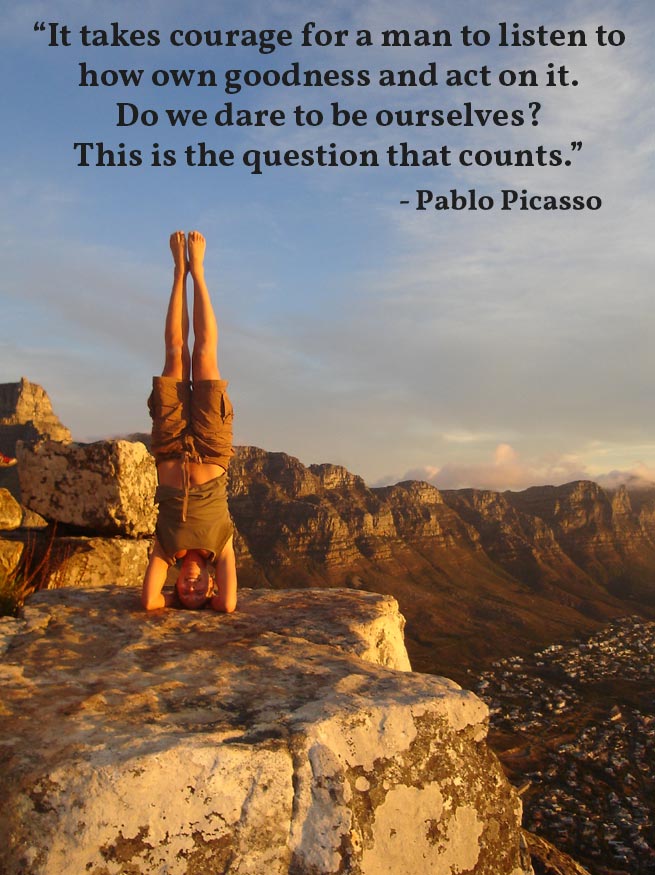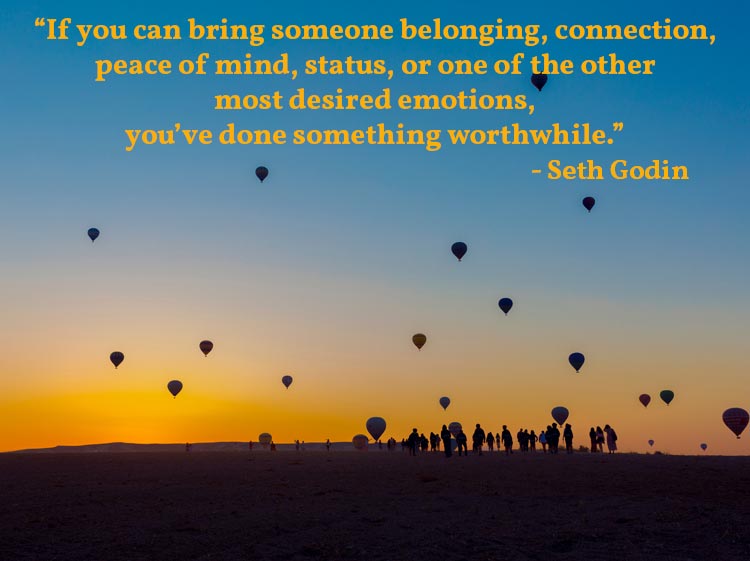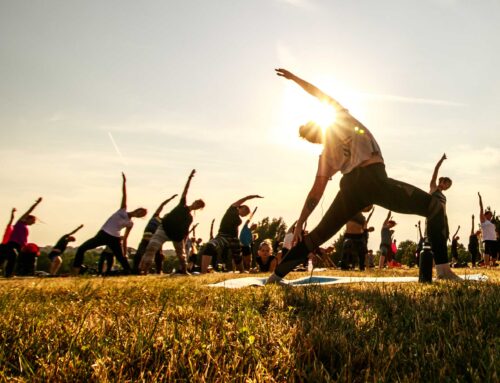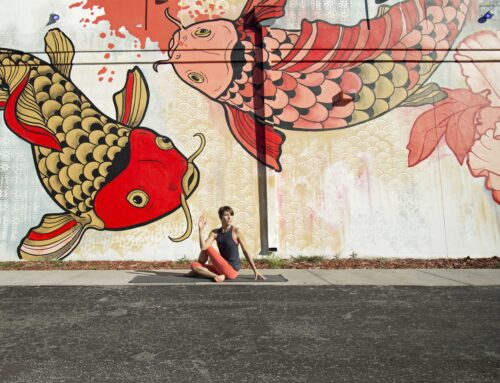 Have you ever been to a yoga class where you felt inspired and challenged? Have you heard another yoga teacher share some seed of wisdom that stuck with you long after you left the room? Did you ever feel more strongly connected to your true self, your teacher, or the room after a memorable yoga experience?
Have you ever been to a yoga class where you felt inspired and challenged? Have you heard another yoga teacher share some seed of wisdom that stuck with you long after you left the room? Did you ever feel more strongly connected to your true self, your teacher, or the room after a memorable yoga experience?
You change lives and grow your yoga business each time create these transformative moments for your students. This post reveals 3 simple steps you can use to do this regularly!
On a recent trip down the California coast, I was inspired by beautiful and unique yoga studios. Union Yoga, in Monterey, provided a very memorable yoga experience for me. There was a friendly staff to greet me and answer my questions about the space. Melodic sounds of from local musicians playing guitar welcomed me into the room. The class sequencing had a purpose and the final savasana turned into a spa-like experience when cool towels were distributed to offset the heat of the practice.
I left the class wanting to tell my friends and clients about the experience. It truly was a highlight of my trip, and if I was a local, I’d be practicing there on a weekly basis.
That same kind of enlightenment I experienced in Northern California is one you can facilitate for your students with each class you teach. It just requires proper planning, presence in the execution, and willingness to listen throughout the entire process.
PLAN AHEAD
The time you have to interact with your students on a face-to-face basis is quite minimal. It’s limited by the number of classes you teach, the length of each class you lead, and the frequency of each student’s attendance. Thus, you want to create a memorable experience that will stick with them long after they leave your class. The best way to do this is to plan ahead for your time together. Here’s how:
Generate a safe and thoughtful sequence
Your students trust you as their guide each time they step on their mat, and you will want to keep them safe along the journey. The destination for each class might be different. You might want to lead them on an exploratory adventure of a specific pose, or you might want to highlight different skill sets such as strength or balance.
In any case, you’ll want to create a thoughtful sequence of postures to maximize their experience. Ask yourself the following questions to create a clear roadmap for each class:
- What is the main pose we are going to explore in class?
- What parts of the body need strength in this pose? Length? Mobility?
- What poses would help open, strengthen, and stretch the body in preparation?
- How could I counterbalance these actions in the body after the main pose?
- What postures could facilitate a deeper release in the body after the work done previously?
Follow a theme
When you have a theme for your yoga classes, it sets a focus and intention for both you and your students. The theme can help you cue with more clarity. It can also be a way for students to guide their own experience. Perhaps most importantly, honest use of a theme connects you authentically with your students–as you are all on the same path of yoga!
Themes can be philosophical, energetic, or anatomical. They can center around an inspirational quote or message. Use your own creativity with your theme–for options are endless here!
Maximize the Power of Good Timing
Starts matter because they set the tone for what is to come. How can you make the beginning of a student’s experience unique? What interactions, themes, or beginning postures can be used to help build momentum for the rest of class?.
No matter the logistics of how you decide to start a yoga class, make sure you utilize clear communication with your students! Speak about your intentions for your time together and what positive changes can occur within them by the time they walk out of the door!
End on a high note
Savasana is the asana taken at the end of class that allows students to absorb the energetic changes made during their practice. It’s also a time where they can reflect on the meaning of their lives and prepare for the new beginnings that await them.
How you facilitate a class ending could be one of the best ways to create meaningful yoga experience for your students. You can do this through:
- Music
- Singing bowls, wave drums, or other instruments
- A specific mindful transition into, and out of, savasana
- Reading a poem or inspirational quote
- Chanting
- Meditating
- Pranayama
- Providing a cool towel or warm blanket
- Offering adjustments, or
- Any other fantastic ideas you have to close in style. Again, the options are endless!
Practice your Sequence
Planning a sequence on paper involves analytical thinking. Then, when you practice the sequence yourself, you memorize it on a kinesthetic (or physical and internal) level, too. You can make it even more seamless when you give yourself the verbal cues aloud. This invites the auditory sense into the learning process.
The biggest benefits of practicing the sequence yourself?
- You will understand which parts of the sequence flow well together, and which ones don’t
- You’ll have a better idea of time management for your selected sequence
- You can be more prepared to modify the sequence, as needed, for the actual skill set of the students who walk in your door to take the class.

Photo Credit: Diane Nicole Photography
BE PRESENT IN THE EXPERIENCE
When you commit to working with clients and teaching classes, you know that your body is going to show up at the scheduled time and place. But does your heart and mind come too? Your gift of being fully present is one of the best ways to make them feel appreciated. It’s also a powerful way they are invited to receive a memorable yoga experience. You demonstrate your presence when you:
Arrive early
Have you ever arrived late to an appointment, feeling flustered and distressed? Prevent this energy from impacting your yoga class by arriving early to every class or client. This involves scheduling plenty of time to travel to your destination, too. Then, when you do arrive, you can make any changes to the room, review your class sequence, and have a calm, welcoming vibe with which to welcome your students!
 Introduce yourself and the class trajectory
Introduce yourself and the class trajectory
As mentioned earlier, you play the role of guide for your student’s yoga experience. Some simple ways you can add clarity to their journey is to:
- Introduce yourself (especially if new faces are in the room)
- Describe the class theme. This will help them refine their own intention while on their mat.
- Explain what postures or parts of the body will be explored. You don’t have to give away all of the details, but even giving hints about where you’re going can soothe the discomfort of uncertainty for them.
Communicate with clarity
The way you speak–including the words you use, the intonation of your voice, and the pace of your speech–all affect your students. Be deliberate with your verbal cues. Use direct, positive dialogue. And definitely, provide pockets of silence often so that students can hear their own thoughts.
Infuse your own personality
While yoga might be a practice facilitated by many instructors, you are a unique messenger! Allow your own personality to shine throughout the class. If you play, allow your music selection to showcase your interests. Are you a jokester? Perhaps add some humor to the challenging portions of the class. Love yoga philosophy? Add a dharma talk to the beginning of your sessions. In any case, just be true to you!!
LISTEN, LISTEN, LISTEN
The above two categories of memorable yoga experiences have to do with what you are planning, sharing, and speaking to your students. But what about the flipside of the communication coin–listening? In order to understand your community deeply, and meet their needs, build the skill of asking relevant and thoughtful questions. Then, get in the habit of closing your mouth, opening your ears, and really hearing the answers of those you care about.
Open your ears during class
Throughout a yoga class, your students provide you with feedback about their experience. They might not share their thoughts with words, but you can hear the quality of their breath. You can observe their body language and facial expressions. You’ll also be aware of the speed and precision of their movements.
Notice these aspects of class closely with your eyes and ears. Invite verbal feedback from your students when it’s appropriate. And, most importantly, be willing to modify your plans to benefit the people on their mats.
Be available for questions after class
People are looking for direction in their lives and will often ask you questions about their practice, their health, their relationships, and much more! These conversations require time and energy. Just like you cleared time out of your schedule to arrive early, perhaps you block off chunks of time after each class, too. If you’re in a rush to get somewhere else, you can miss out on a valuable opportunity to connect in a deeper way with your audience.
Remember, it’s the endings that form the memorable experiences in their mind. Giving this extra time keeps students coming back for more, and increases the likelihood that they will refer you to their friends and family!
Invite students to connect with you apart from the studio
Despite the fact that we can never fully understand the perspective and experiences of others, everyone likes to feel that they have been acknowledged. They like to feel heard. Sometimes the periods before or after class are just too brief for this type of interaction. One way to solve this is to create separate events at your studio or another local setting. This could be a monthly luncheon or afternoon tea or walk in a nearby park. It could be a quarterly talk at your studio that also has open time for more dialogue afterward. You might even schedule a weekend or weeklong retreat.
This element of social networking is extremely important if you are looking to grow your yoga business. Just be sure you can honestly commit to these outside events and honor your own boundaries in the process.

Photo Credit: Mahir Uysal
PUTTING IT TOGETHER
As a yoga teacher, you have the power to uplift and encourage others each time you lead a class or work with your clients. Perhaps the best way to do this is to create memorable yoga experiences for them. This not only amplifies their ability to be present at the moment, but it highlights the positive transformations that are occurring on many levels of their being. The recipe to make this possible is simple:
- Plan ahead
- Be present–body, mind, and spirit–when you’re with your students, and
- Listen!
As you repeat these steps, observe how the bonds of trust grow between you! And notice how your yoga business can flourish based on the loyal clients who are eager to continue their work with you and your unique style!








Leave A Comment